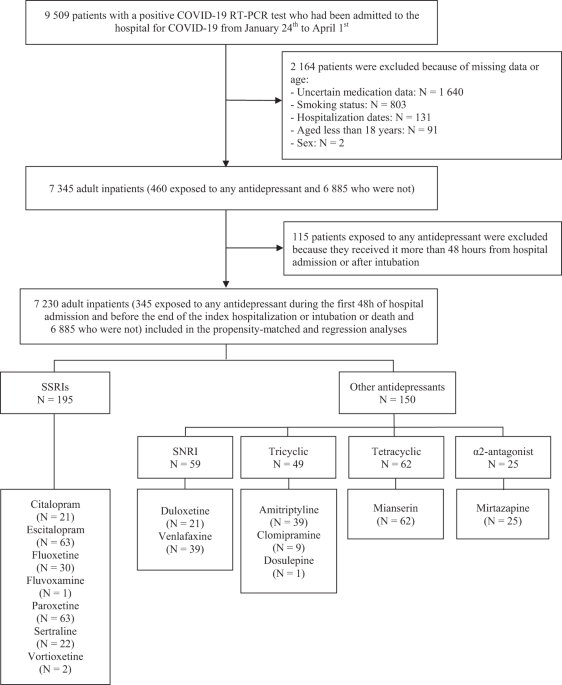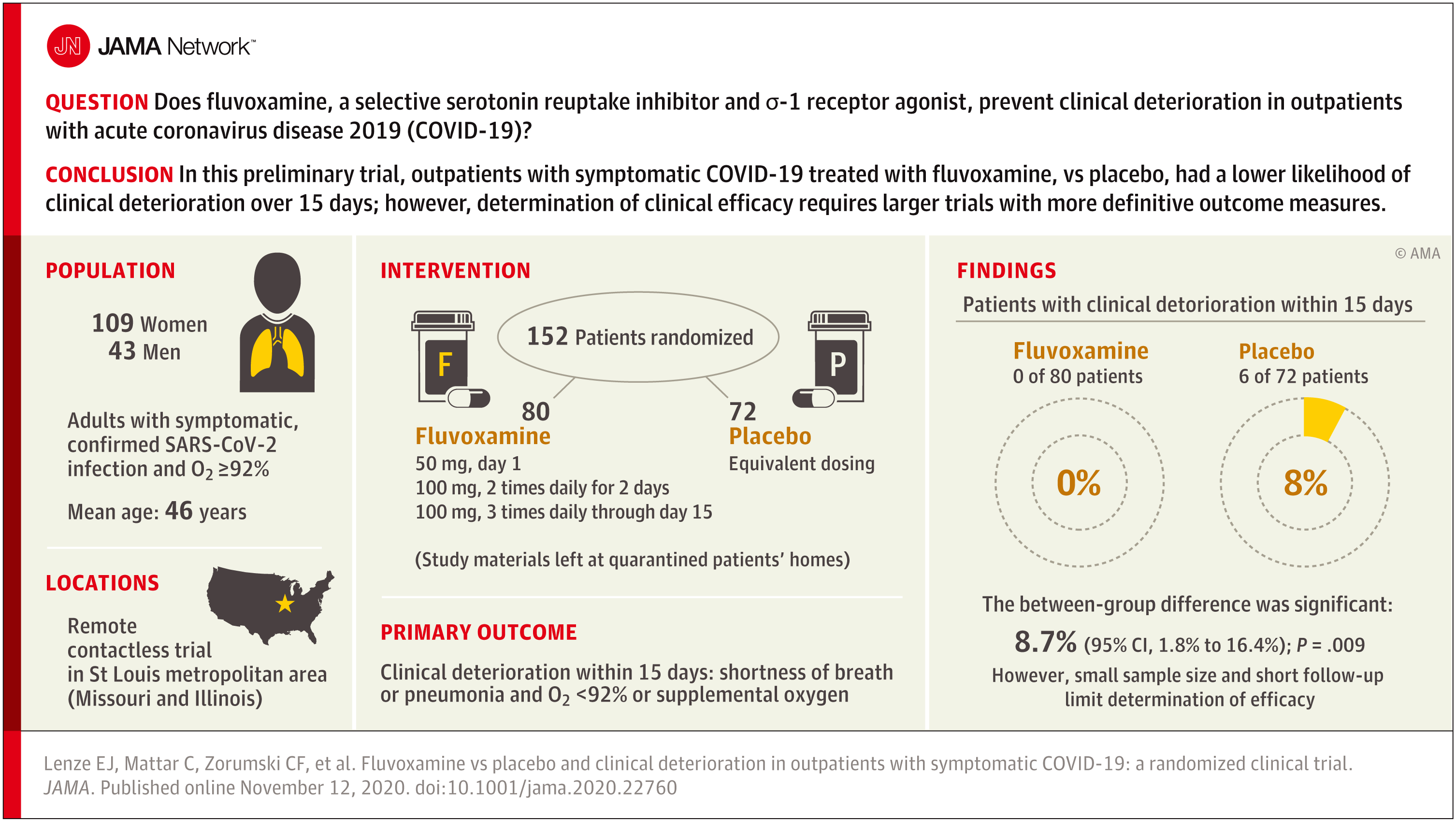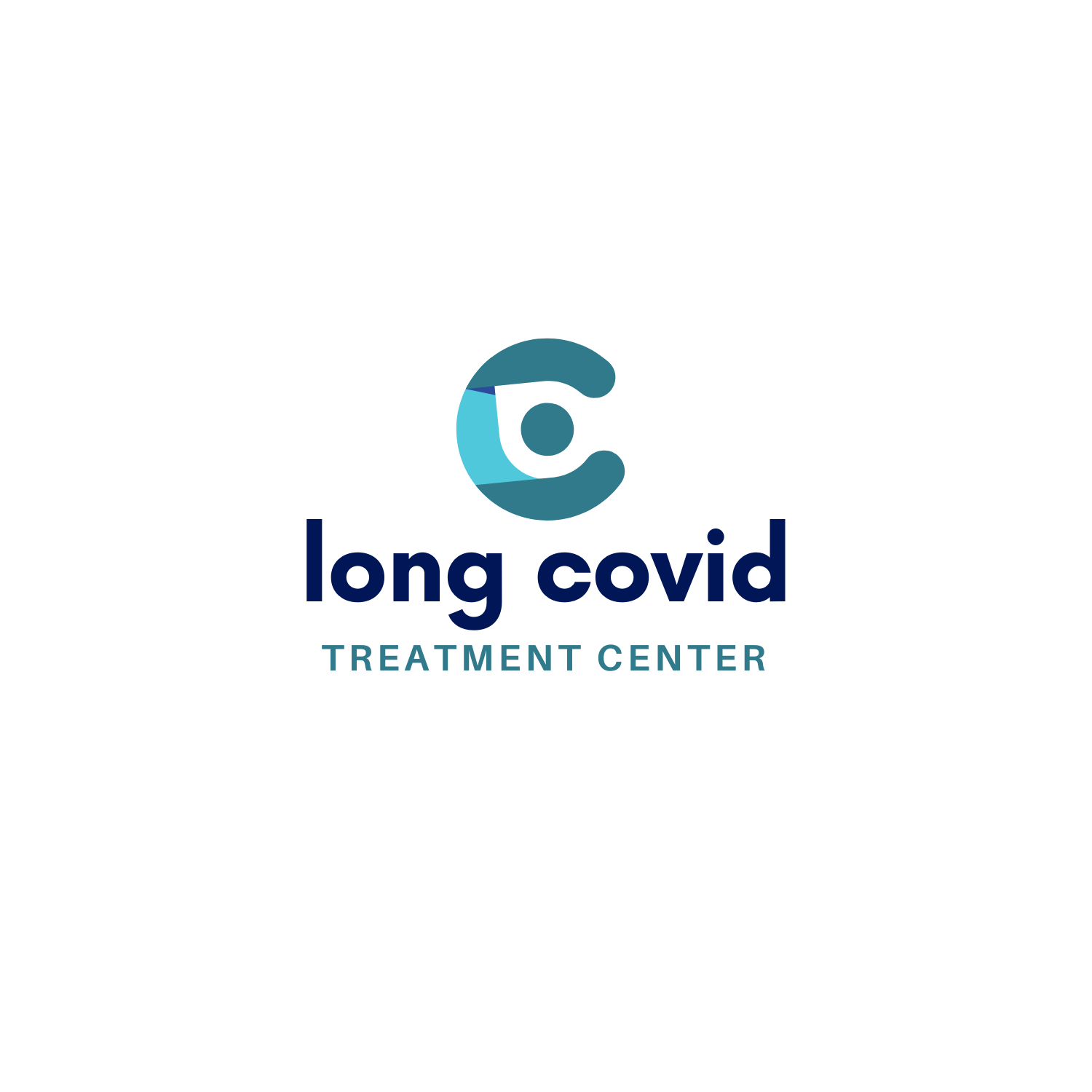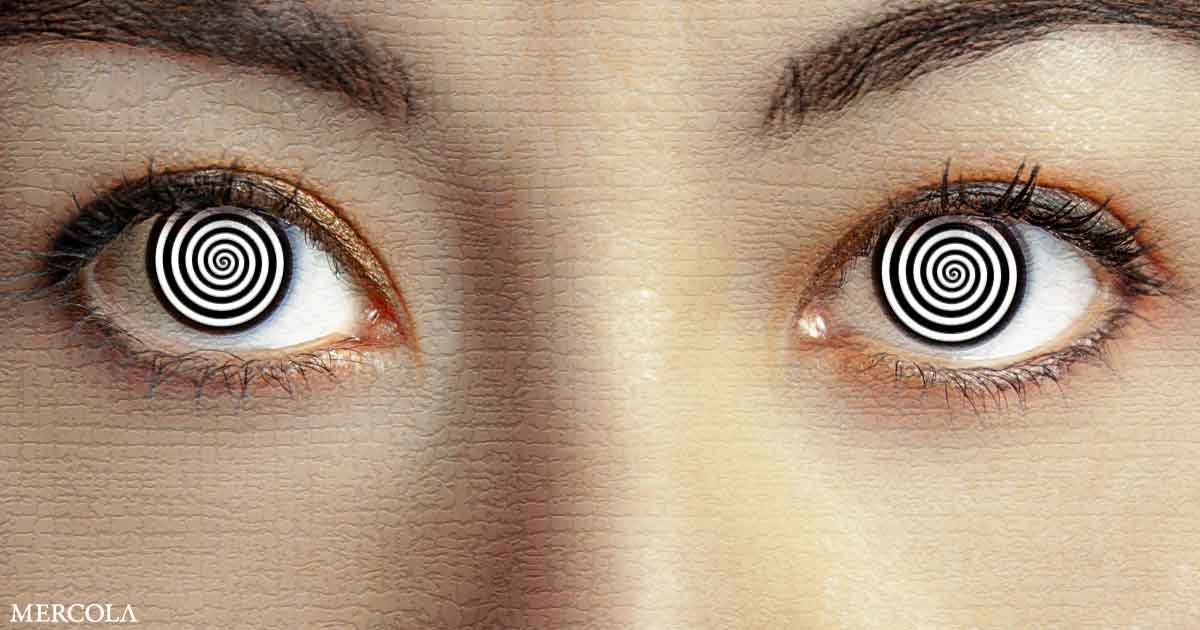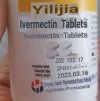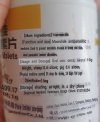Add ... glitches, I did not stroke the parragraphs!! and cannot change it, though ...perhaps some moderator can do that? ... the time for editing ended.
I think I had an experience related to covid, assuming a lot ... at the end of February 2021, I had a urinary infection and subsequently an inflammation in an ovary ... my doctor being an homeopath, I followed protocol to lessen symptoms, I did not do any tests for covid, though, but after learning more about the spike protein and the ACE2 receptor -did the 2+2 .... I remembered the spirulina algae - as an anti-inflammatory detoxifier, and I started taking it ... the inflammation in the ovary had been there for about 3 weeks and I could not reduce it, also my blood pressure dropped and I had dizziness - which at the time I correlated it to other causes, well, I could not be completely sure still ...but, I started taking spirulina algae and in less than a week and gradually observed how it was reducing.
With the recent shedding information, and having had family members at home who were already vaccinated a month ago, even my sister comes often. I observed similar symptoms albeit with less intensity .... I have been searching/reading the forum for information on spirulina, little and every now and then ever time I had come ... today, I took more time ...
In this thread I haven't found anything abaut spirulina, I started searching the internet for more information.
From this Mercola's: Spirulina: A Luxury Health Food and a Possible Panacea for Malnutrition found a track:
Prospective options of algae-derived nutraceuticals as supplements to combat COVID-19 and human coronavirus diseases
I think I had an experience related to covid, assuming a lot ... at the end of February 2021, I had a urinary infection and subsequently an inflammation in an ovary ... my doctor being an homeopath, I followed protocol to lessen symptoms, I did not do any tests for covid, though, but after learning more about the spike protein and the ACE2 receptor -did the 2+2 .... I remembered the spirulina algae - as an anti-inflammatory detoxifier, and I started taking it ... the inflammation in the ovary had been there for about 3 weeks and I could not reduce it, also my blood pressure dropped and I had dizziness - which at the time I correlated it to other causes, well, I could not be completely sure still ...but, I started taking spirulina algae and in less than a week and gradually observed how it was reducing.
With the recent shedding information, and having had family members at home who were already vaccinated a month ago, even my sister comes often. I observed similar symptoms albeit with less intensity .... I have been searching/reading the forum for information on spirulina, little and every now and then ever time I had come ... today, I took more time ...
In this thread I haven't found anything abaut spirulina, I started searching the internet for more information.
From this Mercola's: Spirulina: A Luxury Health Food and a Possible Panacea for Malnutrition found a track:
Enhance Your Immune System, Reduce Inflammation, and Fight Chronic Disease with Spirulina
The health benefits of spirulina are vast and appear to impact virtually every area of your body. For instance, spirulina shows great potential for people with cardiovascular disease, in terms of creating better lipid profiles, controlling hypertension, and increasing blood vessel elasticity.
Animal studies suggest spirulina can also protect your liver, probably as a result of its high antioxidant properties and its ability to synthesize or release nitric oxide, and in a study of three antioxidant-rich diets (blueberries, spinach, and spirulina) spirulina was found to have the highest neuroprotective effect, possibly due to its ability to squelch free radicals and reduce inflammation.9
Spirulina has also been shown to benefit such wide-ranging conditions as arsenic poisoning to allergies. According to one study, patients treated with spirulina reported relief of symptoms commonly associated with allergic rhinitis, such as nasal discharge and congestion, sneezing, and itching.10 In fact, there are scientific studies supporting spirulina's potential usefulness in preventing and/or treating the following health conditions:
...from here to there, I found this: ---due to my lack of knowledge,there are many things that I do not get it, but I think it would be useful to be included in the protocol or at least for you to check it out.AMD (Age-related macular degeneration)
Type 2 diabetes
Cardiovascular disease, including hypertension
NAFLD (Non-alcoholic fatty liver disease)
Liver health and decreased damage from heavy metal exposure
Cerebrovascular disease (including stroke)
Nutritional diseases, such as iron-deficiency anemia, pernicious anemia (B12 deficiency), vitamin A deficiency, and kwashiorkor
Neurodegenerative disorders, such as Parkinson's and Alzheimer's
Protection from HIV11 and other viruses
Reduced allergy symptoms12
Cancer protection13
Radiation protection
Bone marrow and blood health14 (especially during use of anticancer drugs)
Strengthening immune defenses15 and modulating inflammatory response
Reduced pain sensitivity16 by inhibiting prostaglandins, which contribute to pain and inflammation
Reduction of arthritis symptoms
Protection from the damage of ionizing radiation
Prospective options of algae-derived nutraceuticals as supplements to combat COVID-19 and human coronavirus diseases
Abstract
The outbreak of the coronavirus disease of 2019 (COVID-19), caused by severe acute respiratory syndrome coronavirus 2 that has created huge trepidation worldwide, has a mortality rate of 0.5% to 1% and is growing incessantly. There are currently no therapies and/or vaccines that may help abate this viral disease, but the use of masks and social distancing can limit the spread. Boosting immunity has been a simple way to resist viral infection and limit fatalities. In this context, the use of nutraceuticals appears to be a potential panacea. The ability of algae-based nutraceuticals, mainly Spirulina, to boost immunity against viral diseases has already been reported clinically. Spirulina-based nutraceuticals boost the adaptive and innate immunity, and bioactive compounds, such as angiotensin-converting enzyme (ACE) inhibitor peptides, phycobiliproteins, sulfated polysaccharides, and calcium-Spirulan, can serve as antiviral agents. The presence of these molecules indicates its potential role in resisting infection and COVID-19 disease progression. This review focuses on the potential role of algal nutraceuticals as immune boosters to combat the human coronavirus and other viral diseases. The potential use of Spirulina-based nutraceuticals for combating COVID-19, its mechanism, and future directions have also been discussed.
Keywords: Algae, Nutraceuticals, Immune-booster, Antiviral, Coronavirus, COVID-19
Introduction
Since the beginning of the 21st century, humankind has suffered from beta-coronavirus diseases, such as severe acute respiratory syndrome (SARS) coronavirus (CoV), Middle East respiratory syndrome, and SARS-CoV2 [1]. The recent outbreak of the coronavirus disease of 2019 (COVID-19) caused by SARS-CoV2 has created panic around the world because of its higher rate of infection and comorbidity combined with the unavailability of standard therapies and/or vaccines [2]. CoVs are single-stranded, positive-sense encapsulated RNA viruses that have membrane augmented with glycoprotein spikes. These viruses attack the lower respiratory system of the host and affect the lungs, leading to acute respiratory distress causing pneumonia and later leading to the failure of multiple organs, such as the heart, kidneys, liver, and central nervous system [2], [3], [4].
SARS-CoV2 uses ACE2 cellular receptor for entry into the host cell through binding of its spike (S) protein, followed by S protein priming using the serine transmembrane protease 2 [5]. SARS-CoV 2 contains four structural proteins (spike, nucleocapsid [N], membrane [M], and envelop [E]) that may act as antigens. These antigens may induce neutralizing antibodies in the human body and increase cluster of differentiation (CD) 4+/8+ T-cell responses. These mechanisms of action serve as the basis for the treatment regimens used for this disease. At present, no specific or clinically proved therapies/vaccines are available; therefore, the outbreak requires an urgent response from the scientific community for new developments in this area. According to the World Health Organization, the development of a vaccine for COVID-19 might take >18 mo, because of the multiple steps required to ensure its effectiveness and safety. A study conducted by Gordon et al. [6] identified 67 druggable host proteins targeted by 69 existing U.S. Food and Drug Administration-approved drugs [6]. However, at present, only a few potential therapies (favipiravir, remdesivir, lopinavir, and hydroxychloroquine or chloroquine) are reported to be at the final stage of human testing [7].
The elderly and people with underlying medical conditions, such as chronic lung disease, diabetes, kidney and liver diseases, obesity, immunocompromised people (cancer, immune deficiencies), and smokers, are at a high risk [8]. The use of immune-boosting nutraceuticals has the potential to help to combat and control coronavirus infections through the activation of an immune response and alleviating oxidative stress [9], [10], [11], [12]. To date, many types of nutraceuticals, which are derived from natural resources such as animals, plants, marine organisms, and microorganisms, have been reported and are in use. Algae-comprising prokaryotic cyanobacteria and other eukaryotic forms are a rich bioresource of bioactive compounds of nutraceutical and therapeutic importance [13], [14], [15], [16], [17]. The use of cyanobacterium Spirulina-based nutraceuticals is well explored in in vitro and clinical studies and commercially available. Spirulina-based nutraceuticals have been reported to boost innate and adaptive immunity [18], [19], [20], and possess antiviral properties against different enveloped viral infections, such as human immunodeficiency virus (HIV) and herpes simplex virus (HSV) [21], [22], [23], [24]. This review discusses the potential therapeutic role of algae-based Spirulina nutraceuticals in addressing SARS-CoV and related viral infections.
Algae nutraceuticals: Potential therapeutic role in coronavirus and other viral diseases
Compounds that induce the innate and adaptive immune responses are generally used to prevent and fight against various pathogenic infections. Algae derived bioactive compounds are well reported for their antimicrobial, antiinflammatory, immunostimulatory, and immunomodulatory properties that can be potentially used as immune boosters and/or therapeutic agents to control pathogen attacks and disease prevention in humans [15,19,25]. The cyanobacterium Spirulina is commercially produced for human consumption and typically used as a health food supplement due to its high protein content, lipids, vitamins, essential amino acids, minerals, photosynthetic pigments, and biologically active substances (phycocyanin, chlorophyll, and β-carotene).
Spirulina as an immune-booster and immune system potentiator
The use of Spirulina spp. has been found to improve immune function and disease resistance in animals and humans [20,26]. A study on human subjects by Selmi et al. [26] demonstrated that the use of Spirulina supplements ameliorated anemia and immunosenescence in senior citizens diagnosed with anemia (˂13 g dL−1 and ˂12 g dL−1 of hemoglobin in men and women, respectively, for the previous 12 mo) [26]. Both men and women (approximately 40%–60%) manifested an increase in corpuscular hemoglobin, complete cell count, and indoleamine 2,3-dioxygenase enzyme activity on Spirulina supplement consumption for a 6- to 12-wk period. However, randomized clinical trials would be helpful to ensure the validity of this health supplement. Rao et al. demonstrated the use, bioavailability, and antioxidant activity of different types of algal biomass (Spirulina platensis, Haematococcus pluvialis, and Botryococcus braunii) as a source of bioactive compounds (β-carotene, astaxanthin, and lutein) in plasma, liver, and eye tissues in healthy animal models [27]. The tested algae Spirulina platensis and Botryococcus braunii were isolates from India, and the microalga Haematococcus pluvialis was an isolate from Germany. Algal biomass grown under controlled conditions in standard growth media was suspended in olive oil for 15 d and administered to the rats with equal carotenoid concentration [27]. The administration of microalgal biomass helped restore enzyme activity and prevent lipid peroxidation through scavenging free and hydroxy radicals in living cells in the rat model. A significant (P ≤ .05) increase in the activity of antioxidant enzymes (catalase, superoxide dismutase, and peroxidase) in plasma and the liver was reported after repeated doses of algae biomass in rats, indicating their potential role in food, pharmaceutical, and nutraceutical applications [27].
Spirulina supplements and/or extracts are believed to potentiate the immune system, which may help fight and suppress different viral infections [20]. Soluble extracts of Spirulina have been found to enhance natural killer (NK) cell function, macrophage phagocytic activity, and red blood cell antibody response in in vitro studies and trials on different animals and humans [20]. Interferon gamma (IFN-γ) cytokine plays an important role in innate and adaptive immunity in humans, and is a primary activator of macrophages as well as a stimulator of NK cells and neutrophils [28]. The administration of Spirulina could enhance nonspecific preventive measures, such as the activation of CD4+ cells, which further enhance the production of IFN-γ in humans, for the prevention of viral infections [29].
Hirahashi et al. [20] evaluated the potential of condensed soluble extracts of S. platensis grown under outdoor open tanks in alkaline conditions as an immune potentiator in human subjects. Hot water extracts of S. platensis were prepared by autoclaving (1 h, 120°C) biomass, and pH was adjusted to 4.0 using citric acid. The water-soluble fraction was separated via centrifugation, and condensed soluble extracts were orally administered to healthy male volunteers, age 40 to 65 y [20]. The study demonstrated the immune potentiating ability of S. platensis and its mechanism through the analysis of blood cells with the pre- and post-oral consumption of hot water extracts in selected human subjects [20]. The administration of S. platensis extracts increased the production of IFN-γ (representative of NK function) in >50% of tested individuals in an interleukin (IL) 12- and 18- dependent manner. The oral administration of Spirulina in humans could aid signaling responses via toll-like receptors (TLR) and NK-mediated IFN-γ production. Bacille Calmette-Guerin cell wall skeleton is a strong immune adjuvant for various immune therapies and acts as a ligand for TLR 2 and 4 to raise the maturation stage of monocytes/macrophages [30]. In vitro study on the addition of Bacille Calmette-Guerin cell wall skeleton to fresh, human, peripheral blood, mononuclear cells or monocytes (expressing TLR2/4) augmented the potent production of IL-12 p40 in immune-competent cells taken after the administration of S. platensis extracts compared with before the administration [20]. Therefore, oral uptake of S. platensis could be involved in the signaling responses through TLR in blood cells in humans and improve immunity [20].
Inflammation plays an imperative role in innate immunity and, depending on the amount of inflammation caused, may lead to various chronic disorders. Betacoronavirus infection results in the activation of monocytes, macrophages, and dendritic cells, followed by the secretion of IL-6 and other inflammatory cytokines [1]. Acute respiratory distress syndrome in severe cases of coronavirus infections is generally a result of cytokine release syndrome (CRS) and secondary hemophagocytic lymphohistiocytosis [1,31]. CRS and cytokine IL-6 driven elevated serum C-reactive protein are common in patients infected with COVID-19, and has led to urgent clinical research on the use of therapies to suppress CRS [1,32].
The host immune system recognizes pathogen‐associated molecular patterns through pattern recognition receptors. The recognition of coronavirus-associated molecular patterns by the host immune system is mainly mediated by the use of various pattern recognition factors, such as TLR and NOD-like receptor (NLR) [33]. NLRP3 inflammasome activation plays an important role in the innate immune response to pathogenic infections in macrophages, including COVID-19 [34,35]. Spirulina extracts are found to prevent the activation of NLRP3 inflammasome through the inhibition of extracellular signal-regulated kinases (ERK) signaling [18]. Chei et al. recently reported on the antiinflammatory effect of Spirulina maxima extracts on mouse RAW264.7 macrophages and human THP-1 cells [18]. S. maxima biomass grown in volcano seawater in Jeju, Korea was subjected to ultrasound extraction in ethanol for Spirulina extract preparation. The resulting crude extract was dissolved in dimethyl sulfoxide, and used for cell culture studies.
The study showed that Spirulina extracts can suppress lipopolysaccharide-induced NLRP3 inflammasome activation and upregulation of the proinflammatory cytokines tumor necrosis factor-α, IL-12, IL-1β, and IL-18 by inhibiting the lipopolysaccharide-induced phosphorylation of ERK [18]. The phosphorylation of ERK results in the formation of reactive oxygen species, and the inhibition of phosphorylation by Spirulina extract attenuated the harmful effect of ROS. There was a significant reduction in superoxide dismutase and glutathione peroxidase (which removes toxic hydrogen peroxide) expression in RAW264.7 cells upon Spirulina extract treatment. This demonstrated the antiinflammatory potential of Spirulina extract in macrophages, human macrophages, and bone marrow-derived macrophages. Such Spirulina derived extracts could be further explored for the treatment of inflammasome-dependent disorders [18].
The posttreatment care of patients infected with COVID-19 is also highly essential due to the side effects related to drug toxicity. Spirulina and its extracts have been proven to play multiple roles as immune boosters, antiinflammatory, antioxidant, antiapoptotic, and immune stimulatory agents. In this scenario, the application of Spirulina biomass and/or its active ingredients may provide promising protection against drug-induced hepatotoxicity and immunosuppression. Khafaga and Sayed studied the effect of oral feeding of Spirulina platensis powder (DXN Company, Kedah, Malaysia) at 500 mg kg−1 bwt in adult male Wistar albino rats against the effect of the cytotoxic drug, methotrexate [36]. Methotrexate causes a reduction in leukocyte counts, hepatic antioxidant enzymes, reduced glutathione, glutathione peroxidase, catalase, superoxide dismutase; serum immunoglobulins, as well as immunoglobulin (Ig) A, IgM, and IgM levels. Spirulina intake helps ameliorate methotrexate toxicity through the restoration of liver enzymes and a significant reduction in proinflammatory cytokines and lipid peroxidation products. In summary, Spirulina has the potential to enhance immune components and reduce physiobiochemical stress, and therefore could be used as a supplement along with treatments or prevent COVID-19 infection and related symptoms.
Potential therapeutic compounds from Spirulina and mechanisms of action
In addition to immune-boosting agents, algae are potential resources for biologically active compounds with antiinflammatory and antiviral properties, and have been said to enhance the immune system and treat immune disorders related to coronavirus and other viral infections [15,16,19]. Much research has been done on the antiviral properties of algal extracts in vitro; however, studies on the practical implications are still underway and need to be explored at demonstration scale.
Angiotensin-converting enzyme inhibitory peptides
The mechanism of infection by SARS-CoV2 includes the attachment of the viral glycosylated S protein to the ACE2 protein of host human cells, followed by the use of serine transmembrane protease 2 for S protein priming [2]. Severe coronavirus (i.e., SARS-CoV) infections generally lead to the downregulation of ACE2 and more severe lung injury [37,38]. ACE enhances the generation of angiotensin (Ang) II from AngI, which induces acute lung injury by stimulating the AngII type 1 receptor, whereas ACE2 and AngII type 2 receptor negatively regulate this pathway and are protective [37,39]. Upon SARS-CoV2 infection, once the defensive immune system is impaired, propagation of virus leads to tissue damage in organs with ACE2 receptors and induces innate inflammation mediated by proinflammatory macrophages and granulocytes. At this stage, a greater effort is required to suppress inflammation and manage life-threatening symptoms.
Generally, ACE inhibitors, which inhibit the renin–angiotensin –aldosterone system, are used as protective gear for the treatment of severe coronavirus infections [38,40,41]. ACE inhibitors help treat lung/organ injury by enhancing ACE2 activity. However, the use of ACE inhibitors for the treatment of COVID-19 is still under critical debate, especially in cases with medical conditions, such as hypertension, heart diseases, and diabetes [42]. In general, medication for the treatment of these conditions increases the expression of ACE2, and increased expression of ACE2 receptors is suspected to lead to an increased risk of SARS-CoV2 infection, because the virus uses ACE2 receptors for entry into the host. However, this concept is not yet clinically proven.---interesting!
Moreover, the use of ACE inhibitors is clinically proven for the treatment of severe SARS-CoV infections. According to Kuster et al. [38], there are no current data available to show the relationship between ACE2 activity and mortality related to SARS-CoV2 [38]. The most common lethality in coronavirus infections and COVID-19 is associated with underlying lung injury due to the downregulation of ACE2 [38,43]. Therefore, the use of ACE inhibitors is continued for the treatment of multiple organ injury in severe cases of coronavirus infection [38,[44], [45], [46]].
Spirulina is a natural bioresource of ACE inhibitory peptides of therapeutic value that could be explored for their potential in the treatment of severe symptoms (lung injury) and inflammation related to beta-coronavirus infections, including COVID-19. Spirulina extracts have been reported to possess antiinflammatory properties and its potential use in humans, and its mechanism as an antiinflammatory agent has been demonstrated successfully [18]. Moreover, Spirulina nutraceuticals and derived ACE inhibitory peptides have been well demonstrated to boost immune response, reduction in cytokine-related inflammation, and enhancing ACE2 activity in in vitro, in vivo, and in silico studies on model animal organisms and humans in different diseases [18,[47], [48], [49], [50]]. Heo et al. [49] investigated the potential of ACE inhibitory peptide from hydrolyzed Spirulina sp. protein in inhibiting ACE activity in human endothelial cells. In their study, Spirulina sp. biomass was hydrolyzed using gastrointestinal enzymes to obtain hydrolysate. Different sizes of peptides were obtained by molecular weight fractionation of the hydrolysates. ACE inhibitory peptides were purified using ion-exchange chromatography, followed by reversed-phase high-performance liquid chromatography [49]. Molecular dynamics simulation revealed the formation of 5.76 ± 1.50 and 2.58 ± 0.83 pairs of H-bonds by purified peptides with ACE and AngII, respectively, indicating their potential to make dead-end complex through the formation of enzyme-inhibitor and enzyme-substrate-inhibitor complexes and inhibiting ACE catalytic activity [49]. The simulation also revealed that the application of ACE inhibitory peptide (250 μM concentration) decreased the AngII-induced production of nitric oxide and reactive oxygen species and downregulated the expression of inducible nitric oxide synthase and endothelin-1, and blocked the activation of mitogen-activated protein kinase (p38) in EA.hy926 endothelial cells. McCarty and DiNicolantonio [9] postulated that the possible use of nutraceuticals capable of inhibiting NADPH oxidase 2 production, promoting the clearance of hydrogen peroxide or aiding the restoration of the native structure of Cys98 in TLR7, might help boost the TLR7-mediated induction of type 1 IFN (innate immunity response) and antiviral antibodies. Thus, in this perspective, the use of algae-derived ACE inhibitory peptides seems to be a potential option that might play multiple roles as ACE inhibitors, immune boosters, and treating vascular dysfunction in human viral diseases, including COVID-19.
He et al. found that ACE inhibitory peptides (Ile-Gln-Pro [IQP] and Val-Glu-Pro [VEP]) derived from Spirulina platensis (synthesized by SP Biomart Ltd., Beijing, China) could be absorbed intact via Caco-2 cell monolayers and is expected to have high bioavailability [51]. The transport of both peptides was energy-dependent and involved an apical-to-basolateral flux mediated by P-glycoprotein for the transport of VEP. Zheng et al. [50] also reported that the oral administration (10 mg−1kg−1d−1 for 6 wk) of Spirulina platensis derived bioactive peptides IQP, VEP, as well as biomass hydrolysates, exhibited ACE inhibiting activity, and could improve blood pressure in hypertensive rats [50]. The researchers found that there was a significant reduction (P ˂ .05) in ACE mRNA levels by 76.8%, 68.6%, and 87.7% in IQP, VEP, and biomass hydrolysates supplemented groups, respectively, compared with the control group. This was achieved by modulating the expression of local kidney renin angiotensin system components by downregulating the ACE, AngII, and Ang type 1 receptor while upregulating ACE2, Ang (1–7), Mas, and Ang type 2.
Additionally, peptic and tryptic protein hydrolysates of Spirulina platensis were also reported to inhibit the activity of peptidyl-peptidase IV (half maximal inhibitory concentration [IC50–] 3.4 and 0.1 mg mL−1) and ACE (IC50–3.0 and 0.28 mg mL−1) in an in vitro study and cellular assays in Caco-2 cells, respectively [47]. Aiello et al. found that S. platensis peptic and tryptic hydrolysates decreased the ACE activity in vitro (measuring the formation of hippuric acid [HA] from hippuryl-histidyl-leucine [HHL], a mimic substrate for AngI) in a dose-dependent manner with IC50 values of 0.1 ± 0.04 mg mL−1 and 0.28 ± 0.03 mg mL−1, respectively. Similarly, both hydrolysates inhibited ACE activity in cellular assays in Caco-2 cells with IC50 values of 2.7 ± 0.3 mg mL−1 and 2.8 ± 0.9 mg mL−1, respectively. Anekthanakul et al. [48] developed a SpirPep platform to assist in silico-based bioactive peptides discovery of bioactive compounds from Spirulina, and showed that peptides derived from Spirulina were mainly involved in ACE inhibitory activity. The researchers reported two new ACE substrate binding sites (R124 and S219) along with binding site residues (D121, E123, S516, and S517) from natural ACE inhibitory peptides (AngII and bradykinin-potentiating peptides) through which SpirPep1 indirectly bound to ACE. Natural ACE inhibitory peptides from Spirulina have great potential in ACE inhibition and enhancing ACE2 activity [48].
ACE inhibitors are generally used to enhance ACE2 activity for the treatment of tissue injury in various organs in severe cases of coronavirus infection. Different studies have shown that potential applications of Spirulina derived ACE inhibitory peptides as an antiinflammatory and antioxidative agent via enhancing ACE2 activity and reducing cytokine related inflammation [18,[47], [48], [49], [50]]. Therefore, based on these studies, supplementation of Spirulina-derived ACE inhibitory peptides may play a potential therapeutic or subsidiary role in the alleviation and treatment of oxidative stress, cytokine release syndrome, and tissue injury in SARS-CoV2 and other coronavirus infections through the regulation of ACE2 activity (Fig. 1 ). However, assessing the potentiality of these Spirulina-derived compounds in SARS-CoV2 infection is too early and needs to be reconnoitered with basic and clinical research.
Fig. 1
Postulated mechanism of severe acute respiratory syndrome coronavirus (SARS-CoV) 2 pathogenesis and proposed potential of supplementation of Spirulina nutraceuticals in alleviating oxidative stress and tissue injury. Similar to SARS-CoV, SARS-CoV2 is believed to infect host cells via binding of the virus spike protein with angiotensin converting enzyme (ACE) 2 receptors of the host cell and lead to the downregulation of the ACE2. ACE2 is a suppressor of the renin-angiotensin system, where ACE catalyzes the conversion of angiotensin (Ang) I to Ang II, which further binds to angiotensin II type 1 receptors and induces acute tissue injury. On the other hand, ACE2 hydrolyzes Ang II to Ang 1 to 7 peptide that acts on the Mas receptor and protect from tissue injury. Supplementation of Spirulina nutraceuticals in SARS-CoV2 infection may help upregulate ACE2 activity and downregulate ACE activity that may further assist to overcome cytokine release syndrome and aid in tissue protection and repair.
Novel sulfated polysaccharides from different algal resources are reported to exhibit antiviral properties and are of therapeutic use against different viral infections [23]. Novel sulfated polysaccharide derived from different species of Spirulina designated as calcium-spirulan was found to possess distinct antiviral activity against different enveloped viruses, including Herpes simplex virus type 1, human cytomegalovirus, measles virus, mumps virus, influenza A virus, and HIV-1 in different human cell lines [21,22,52]. Hayashi et al. [21] revealed that the main mechanism of antiviral activity of calcium-spirulan derived from Spirulina platensis is involved in the inhibition of viral replication via selective inhibition of penetration of the virus into the host cell. The main components of calcium-spirulan were calcium, sulfate, glucuronic acid, galacturonic acid, glucose, xylose, galactose, fructose, mannose, ribose, and rhamnose. The researchers suggested that the main antiviral activity of the calcium-spirulan might be exhibited due to the molecular conformation through the chelation of calcium-ion with sulfate groups.
In another study, Hayashi et al. [52] evaluated the antiviral potential of calcium-spirulan derived from Spirulina platensis against HIV-1 and HSV-1 compared with standard dextran sulfate. Mice treated intravenously with calcium-spirulan isolated from S. platensis showed increased serum concentration of 1000 µg mL−1 after 30 min of administration, which gradually decreased. Serum samples from calcium-spirulan administrated mice showed long-lasting antiviral activity against HIV-1 and HSV-1 even after 24 h of administration. This was significantly higher compared with the representative sulfated polysaccharide desxtran sulfate [52].
Phycobiliproteins are a group of water-soluble proteins that possess antioxidant, antiinflammatory, and antimicrobial properties [53]. Water-soluble extracts of Spirulina are generally rich in phycobiliproteins, which also exhibit antiviral properties. A study conducted by Chen et al. [29] showed that cold water extract of Spirulina (Arthrospira platensis, Far East Bio-Tec Co., Taipei, Taiwan) exhibited antiviral effect in influenza A/WSN/33 (H1N1) virus-infected mice. BALB/c female mice were given Spirulina extracts by oral gavage at concentrations of 5, 12.5, and 25 mg kg−1 4 h before intranasal inoculation of the H1N1 virus in mice (2.0 × 104 PFU per mouse). At the early stages of infection, Spirulina extracts reduced the virus yield in cells and improved the survival rate by 0%, 20%, 40%, and 60% on the oral gavage at 5, 12.5, and 25 mg kg−1 Spirulina extracts, respectively, in the infected mice. Hemagglutination was identified as one of the mechanisms involved in the inhibition of viral replication. The tested Spirulina extracts was composed of 39.33% of protein, 11.79% of polysaccharides, 19.29% of nucleic acids, 5% of water, 1.2% of ash, and approximately 23.39% of unknown components. C-phycocyanin and allophycocyanin constituted 50% and 10% of the protein fraction, respectively, which indicated that antiviral properties of Spirulina extracts are mainly contributed by phycobiliproteins. Antiinflammatory, antioxidant and immunomodulatory activities of Spirulina derived phycobiliproteins have also been extensively reported [25,53,54]; however, future clinical investigations on multiple roles of these bioactive compounds are still warranted.
ConclusionsThe recent outbreak of COVID-19 caused by SARS-CoV2 has triggered multiple facets of new research to prevent infection and treat the disease. The role of nutraceuticals and similar compounds might have some answers for getting a handle on this pandemic. Spirulina-based nutraceuticals and bioactive compounds have been known for their antioxidant, antiviral, antiinflammatory, immunostimulatory, and immunomodulatory properties, and therefore could act as immune-boosting and therapeutic agents. The presence of natural ACE inhibitors (ACE inhibitory peptides), and antioxidants, antiviral compounds (calcium spirulan, phycocyanobilin) indicate beyond a doubt that Spirulina-based nutraceuticals can be integrated into the current research and clinical trials for immunity stimulation, disease prevention and treatment of disorders related to severe coronavirus infections, such as tissue repair in ACE2 dominated organs and antiinflammatory treatment. Despite the desired properties, their role in COVID-19 (SARS-CoV2 infections) remains limited and warrants urgent developments in this area. Although too early to design studies to assess the effectiveness of Spirulina against SARS-CoV2, the potential of nutraceutical supplements warrants basic and clinical research. Clinical studies in cell lines, animal model systems, and humans are required to understand and verify these speculations on the use of algal bioactive compounds as nutraceuticals for the treatment of COVID-19 and related symptoms.
Go to:
AcknowledgmentsThe authors acknowledge the National Research Foundation (UID 84166), Republic of South Africa, and Durban University of Technology for providing financial assistance.
Go to:
Last edited:


